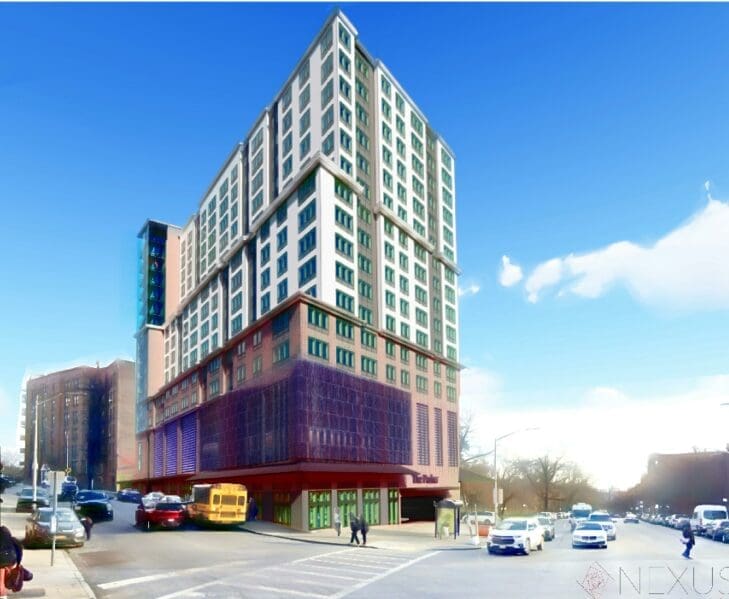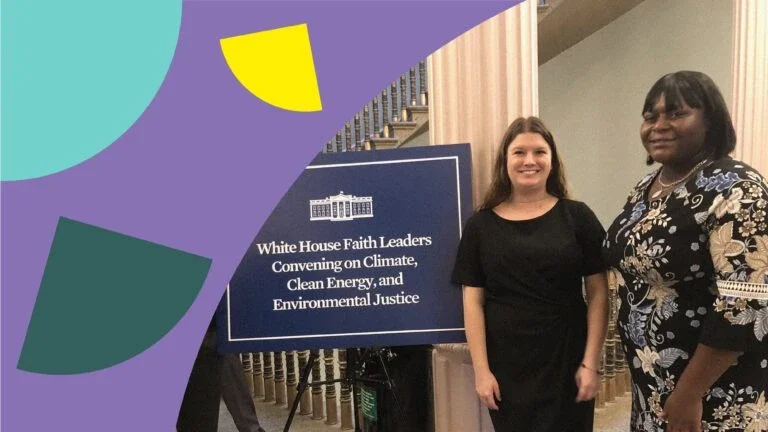Buildings account for about two-thirds of New York City greenhouse gas emissions—an astonishing figure that highlights the importance of upgrading buildings to make them part of the green energy transition.
At NYCEEC (NYCEEC), our mission is to deliver financing solutions and advance markets for energy efficiency and clean energy in communities. As a green bank focused on community lending, NYCEEC is proud to have the financial support of The Rockefeller Foundation to tackle the challenge of reducing emissions from New York’s existing buildings.
NYCEEC loans address gaps in the commercial finance market, providing capital to projects that might be too small, too complex, or use newer, less tested technologies.
Our financing supports a range of technologies, including passive house projects (where materials and design elements reduce energy use), zero net energy buildings (where on-site energy production, usually from rooftop solar, exceeds demand annually), and building electrification (where all energy used is electricity produced on-site or delivered through the grid).
NYCEEC also finances technologies that bring broader benefits to the grid, such as demand management investments (where energy use is reduced automatically in response to grid needs), energy storage (to help match energy supply and demand), and electric vehicle charging infrastructure (to support tenants or provide tenant revenues by charging non-tenant vehicles).
Meeting Short- and Long-Term Aims
New York State has set a near-term goal requiring 70 percent of the state’s electricity to come from renewables by 2030. By financing the installation of these measures in existing buildings, we not only enable greenhouse gas reductions, but also prepare these buildings for this transition.
While NYCEEC finances the broad deployment of green technologies, it focuses primarily on buildings supporting low-income and disadvantaged communities.
NYCEEC has greened over 15,000 affordable housing units and 85 percent of our projects have been financed in often-overlooked communities.
Our measures typically increase tenant well-being by giving them more control over heating and cooling, improved indoor air quality, and enhanced building safety through reducing combustion sources.
For example, when units in multi-family buildings are retrofitted from central heating (radiators) to heat pumps and individual thermostats, tenants gain control over the temperature in their apartments. When buildings move from burning fossil fuels on-site to all-electric, the elimination of the related smokestack increases air quality. From a safety perspective, moving away from gas eliminates the need for a gas line to run through a building, increasing safety for the residents.
We carefully analyze savings and benefits for each project. There are no cookie-cutter solutions.
In New York City and Beyond
For example, NYCEEC recently provided a loan to Dextall (Dextall) a company that produces prefabricated exterior wall systems for retrofitting buildings. The loan supported the installation of Dextall’s prefabricated wall panels for an affordable housing complex in East Harlem, N.Y. Their panels exceed energy code requirements by more than 16 percent, providing better tenant well-being.
“Living at The Heritage after the renovation has been truly transformative. The difference is staggering – from the gloomy, outdated feel to the stunning new look of the building, it’s like night and day,” said Brenda McGirt, a tenant of Dextall’s projects in East Harlem. “Before, the old windows barely allowed any light in, and the narrow bedroom windows felt like something out of a prison cell. Now, everything has changed. The apartment feels cozy and warm, with no more pesky drafts to contend with. This entire transformation has uplifted not just my living space, but my spirits as well”.
In a separate project in Times Square, NYCEEC provided a predevelopment loan to support partial electrification and energy efficiency measures at Geffner House, a 20-story building with 307 single-room occupancy units for low-income and formerly homeless tenants. The electrification and energy efficiency measures are expected to drive site energy savings reductions of up to 45 percent, thereby cutting the cost of public subsidies provided to tenants. The predevelopment loan was provided to this borrower as part of NYCEEC’s Green Predevelopment Loan Program, a collaboration we have had with NYC Housing Preservation and Development (HPD) since 2015.
HPD’s Assistant Commissioner/ Chief Sustainability Officer Jennifer Bloom Leone said, “HPD has benefitted greatly from our long-standing collaboration with NYCEEC. The Green Predevelopment Loan Program has enabled over 50 projects to integrate deeper efficiency and resiliency into project scopes to create healthier and safer affordable homes for New Yorkers.”

Rendering of MacQuesten Development in Yonkers, New York.
The need to retrofit and upgrade the existing building stock is not just a New York City issue. NYCEEC recently provided a loan to support installing a rooftop solar power system, lithium-ion battery storage, and DC fast electric vehicle chargers at a municipal building in Westchester County, N.Y. In Yonkers, we provided funding to MacQuesten Development (MacQuesten) to support the development of a 16-story, 160-unit high-performance affordable multifamily housing property. The building will be designed as all-electric and incorporate energy savings measures that exceed local code requirements, including installation of energy-efficient heat pumps, high levels of continuous insulation, and lighting controls.
Across the country, buildings need to be upgraded to reduce or eliminate greenhouse gas emissions, while providing tenants with improved building safety, thermal comfort, and air quality. The retrofit work being done by NYCEEC serves as a model for this critical effort.



